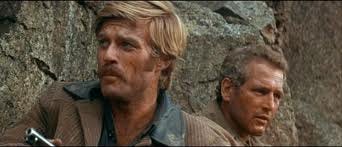This article continues our project explaining each line of Sun Tzu’s work. The English and Chinese are from my award-winning translation, The Art of War and The Ancient Chinese Revealed. Start here for the book’s opening lines.
The lines discussed in this article finish the Fifth and final Section of Chapter 5 of The Art of War. This chapter explains how our strategic Momentum is created by the use of proven methods that are kept moving forward by surprising innovations. This is the last stanza of this chapter and suitably, it addresses last gasp surprises.
In the previous article, we explained the first characteristic that determines the force of our momentum: the shape of the what gets the momentum. Round shapes roll; angular ones do not. That article went on to explain that a “round” person or organization as one that has had all their “sticking points” worn down. They have been kept moving by continuously adapting to surprises and constantly innovating. By being a rolling stone, round people lose their fear of change and become trained in constantly improving their use of time.
In this article, we look at the second characteristic that determines the force of momentum: the slope of the ground. In this earlier article, Sun Tzu discusses the “tilted” ground form. The form where gravity provides the advantages. The more tilted the ground, the more force and momentum round objects develop. The question addressed in this article is the nature of tilted ground.
A Chapter Summary
Since this stanza is the last of this chapter on Momentum, we should start with a summary of this chapter’s key ideas about positions and our momentum advancing them. Sun Tzu often uses the last stanza of a chapter for a summary of the chapter’s main points, but, surprisingly, he doesn’t do that in this stanza. He ends the chapter abruptly because the topic is abrupt endings. However, as we leave this chapter, it is helpful reviewing its key points.
At the end of the previous chapter, Sun Tzu explained how surprises, that is, unexpected events and innovations, are a constant part of competition. This chapter begins describing the result of constant surprise: chaos. However, our adapting to chaos provides the seeds for our advancing to better strategic positions.
The next section discusses that the emergence of a new order from chaos depends on our understanding the psychology of surprise. Knowing to expect chaos, we can gain the confidence and courage needed to examine surprises for their hidden opportunities, ones that play to our strengths and the weaknesses of others.
Next, our ability to adapt to change depends on a deep understanding of our positions in the physical world and especially in the minds of others. These existing positions are the source of all our strengths and weaknesses. If we find something that improves our position in the chaos of constant change, we have found not only a surprise but often innovations that improve our methods.
Next, our progress doesn’t depend only upon ourselves. Our positions a defined by the positions of others, especially our positions in their minds. We must pull or push others in a direction that adapts their relationships to us to constant change.
The next section discusses how, when individuals master the organizations standard methods, what Sun Tzu calls “direct methods,” those people should be given a license to experiment, looking for new ideas that might work. Many of these experiments willmfail, but over time skilled people find ways to simplify, improve, and speed their routine tasks.
This brings us to the previous article and its discussion of rounding people and organizations so the can more easily move forward. That article uses the analogy of round rocks and tree logs to explain the roundness requirement of momentum.
The Last Stanza
This brings us to the first line of this final stanza on momentum.
(In the quotations below, we summarize each Chinese character as a single English word shown in < > brackets. A sentence from my English translation follows.)
<Make> <good> <battle> <men> <’s> <influence>
You make your men powerful in battle with momentum.
The rest of this article is reserved for our paid subscribers. Become a free subscriber for weekly previews and one monthly free article. To get all weekly articles become a paid subscriber.
Keep reading with a 7-day free trial
Subscribe to Practical Strategy Based on Sun Tzu's Art of War to keep reading this post and get 7 days of free access to the full post archives.





